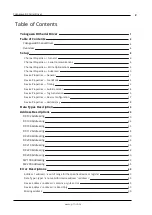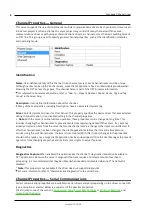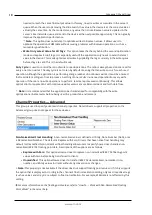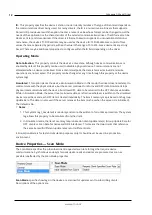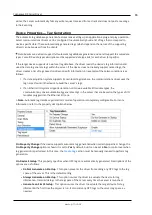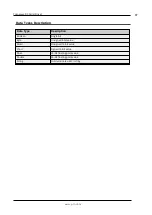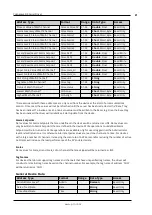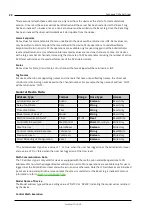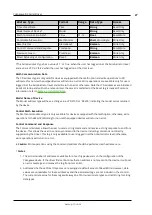
Yokogawa DX Serial Driver
ID
: This property specifies the device's station / node / identity / address. The type of ID entered depends on
the communications driver being used. For many drivers, the ID is a numeric value. Drivers that support a
Numeric ID provide users with the option to enter a numeric value whose format can be changed to suit the
needs of the application or the characteristics of the selected communications driver. The ID format can be
Decimal, Octal, and Hexadecimal. If the driver is Ethernet-based or supports an unconventional station or
node name, the device's TCP/IP address may be used as the device ID. TCP/IP addresses consist of four
values that are separated by periods, with each value in the range of 0 to 255. Some device IDs are string
based. There may be additional properties to configure within the ID field, depending on the driver.
Operating Mode
Data Collection
: This property controls the device's active state. Although device communications are
enabled by default, this property can be used to disable a physical device. Communications are not
attempted when a device is disabled. From a client standpoint, the data is marked as invalid and write
operations are not accepted. This property can be changed at any time through this property or the device
system tags.
Simulated
: This option places the device into Simulation Mode. In this mode, the driver does not attempt to
communicate with the physical device, but the server continues to return valid OPC data. Simulated stops
physical communications with the device, but allows OPC data to be returned to the OPC client as valid data.
While in Simulation Mode, the server treats all device data as reflective: whatever is written to the simulated
device is read back and each OPC item is treated individually. The item's memory map is based on the group
Update Rate. The data is not saved if the server removes the item (such as when the server is reinitialized).
The default is No.
Notes
:
1. This System tag (_Simulated) is read only and cannot be written to for runtime protection. The System
tag allows this property to be monitored from the client.
2. In Simulation mode, the item's memory map is based on client update rate(s) (Group Update Rate for
OPC clients or Scan Rate for native and DDE interfaces). This means that two clients that reference
the same item with different update rates return different data.
Simulation Mode is for test and simulation purposes only. It should never be used in a production
environment.
Device Properties — Scan Mode
The Scan Mode specifies the subscribed-client requested scan rate for tags that require device
communications. Synchronous and asynchronous device reads and writes are processed as soon as
possible; unaffected by the Scan Mode properties.
Scan Mode
: specifies how tags in the device are scanned for updates sent to subscribing clients.
Descriptions of the options are:
www. ptc.com
12


